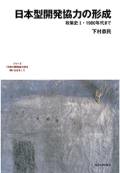Reconsidering the History of Japan's Development Cooperation Series, Volume 1 'Policy History I: Evolution of the Japanese Model of Development Cooperation, 1945-89'

Amidst the turmoil soon after World War II, many Japanese policymakers were aware of the importance of providing economic cooperation to developing countries. This book begins the analysis of the significance of development cooperation for Japan through the angle of their policymaking philosophy.
In the period from 1945 to 1954, Japan was in search of integrating economic cooperation and postwar reparations; in the period from 1955 to 1964, Japan actively promoted development cooperation as a result of its rapid economic growth and finally joined the OECD; in the period from 1965 to 1979, Japan emerged as an aid power during the Cold War and began to formulate "customer-oriented" development cooperation that respects the initiatives of developing countries; and in the 1980s, the amount of critical voices raised from the West and Southeast Asia reached its peak simultaneously, and this external pressure led to important changes in Japan's development cooperation policy. The book takes a look back at the trajectory of Japan's development cooperation policies, systematically analyzing each period to see what happened to Japan's development cooperation and what kind of policy decisions were made, covering the period from the days of Japan as an aid recipient to the era of Japan as the world's largest donor.
Through this examination, it becomes apparent how Japan's development cooperation policies are different from the prevailing ideas. The "trinity" cooperation model—which emphasizes infrastructure construction and foreign direct investment, and leads developing countries to graduation from aid dependence—and the customer-oriented development cooperation were different from the orthodox international development norms led by Western countries. The Japanese model of development cooperation has been formed, on the foundation of Japan’s intellectual assets, reflecting socio-political changes in Japan and international pressure, particularly from the recipients. This heterogeneous model introduces a multifaceted approach to development cooperation, while it has been under the single development regime; in other words, it presents a new perspective to look at development from different angles.
This book is filled with a wide variety of voices, including those of the developing countries, and allows readers to get a vivid idea of the time and the people involved, which would not be found in the official documents. It is replete with insights from the author, who has spent his life in the field of development cooperation, carefully keeping an eye on the people of developing countries.
This is the first volume of a seven-volume book series, "Nihon no Kaihatsukyoryokushi wo Toinaosu (Reconsidering the History of Japan’s Development Cooperation)" (available only in Japanese) published as the result of a research project by the JICA Ogata Sadako Research Institute for Peace and Development, entitled "Japan’s Development Cooperation: A Historical Perspective." The history of Japan's development policies since the 1990s is documented in the second volume of the series, which will be published in due course.
scroll